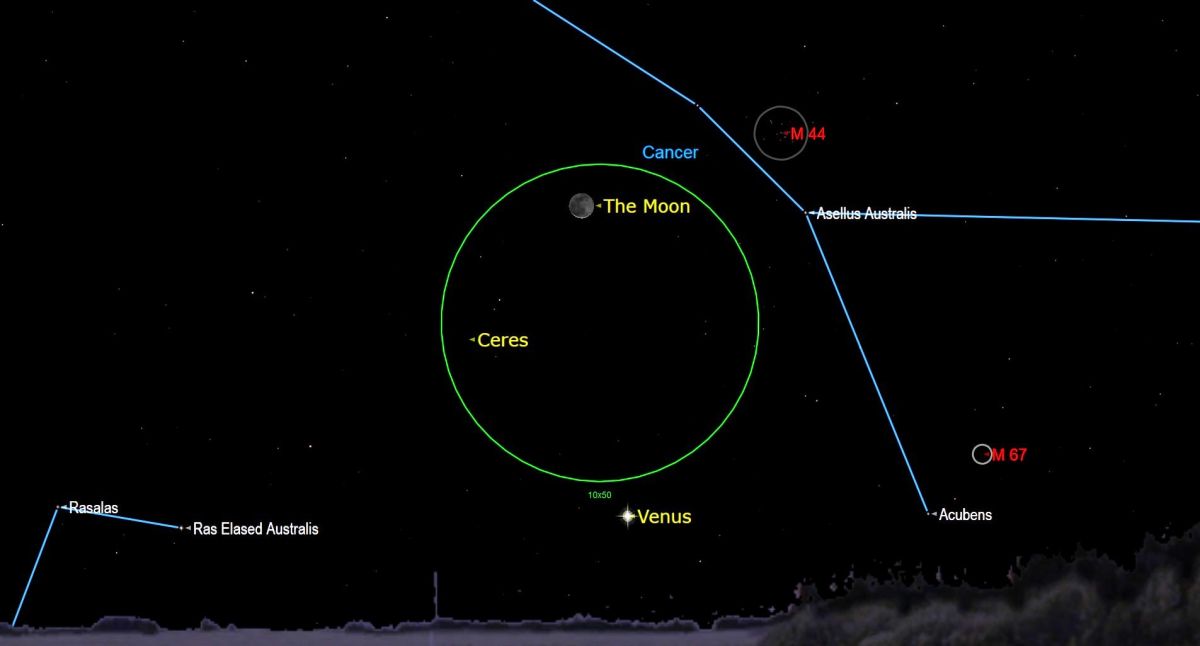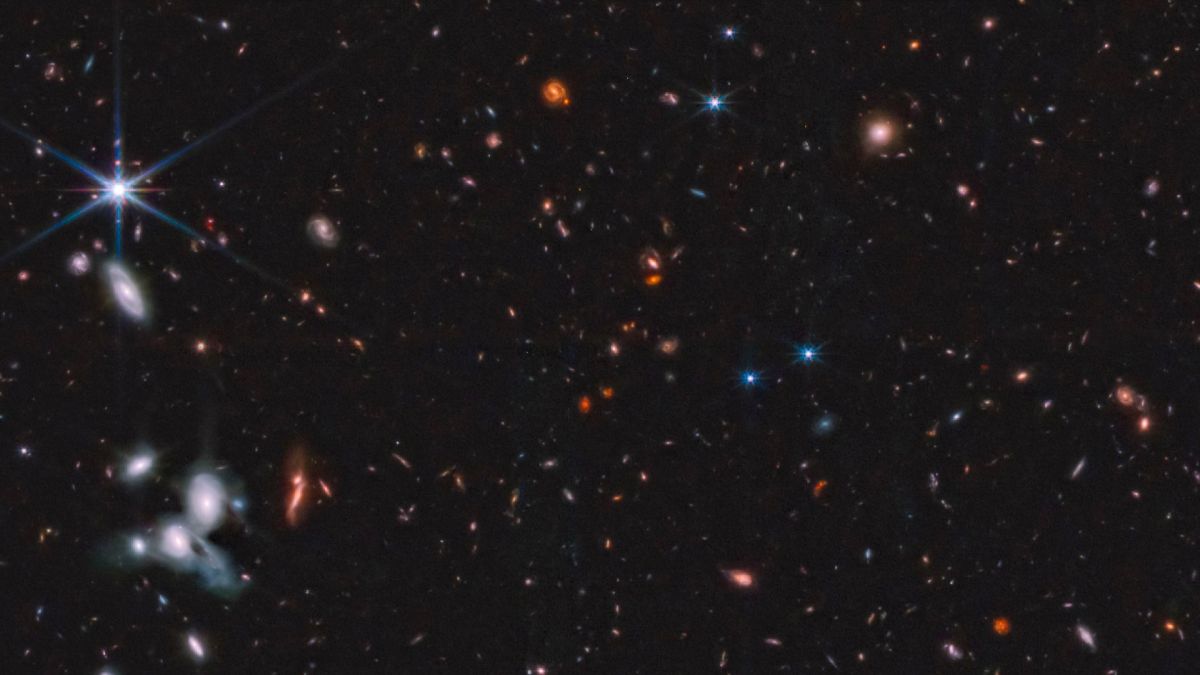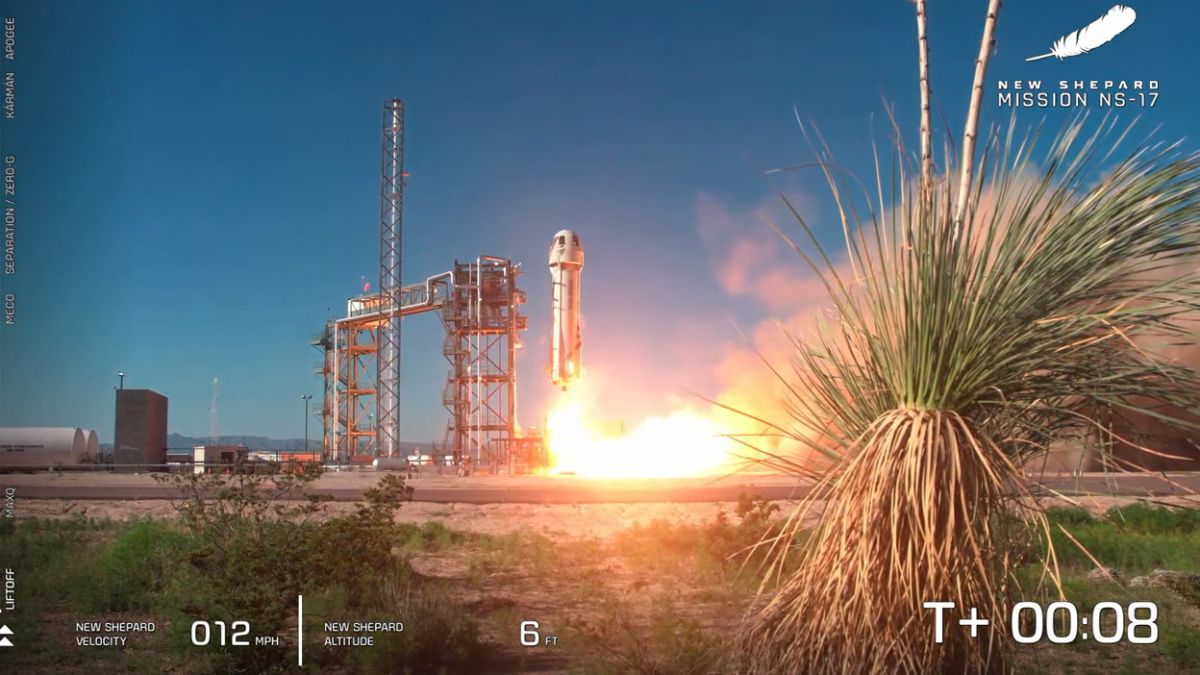Students from Colorado and Indiana will have the opportunity next week to hear from NASA astronaut Kjell Lindgren aboard the International Space Station.
Read MoreMonth: August 2022
NASA astronauts buzz Artemis 1 SLS rocket in incredible jet flyby (photos)
Being an astronaut has never looked this fun. A group of NASA astronauts shared an incredible series of images showing them performing a flyby of the Space Launch System (SLS) rocket while it sits waiting on the launch pad ahead of its scheduled Artemis 1 launch on Aug. 29. The images, shared on Twitter by astronauts Andrew Morgan and Reid Wiseman and astronaut candidate Christina Birch, show four NASA T-38 trainer jets flying in formation recently above both the 322-foot-tall (98 meters) SLS megarocket at Launch Complex 39B and the…
Read MoreSee the old moon and Venus conjunction tonight
About an hour and a half before sunset on Thursday (Aug. 25), Venus will shine close to the old moon in the early-evening sky. The waning crescent moon will pass a mere 4°17′ to the north of the bright planet Venus. This close encounter, or conjunction, occurs at 4:58 p.m. EDT (20:58 GMT), when the two objects share the same right ascension or the same ecliptic longitude, according to In-the-Sky.org (opens in new tab). The moon is currently shining at a magnitude of -8.4, while Venus shines with a magnitude…
Read MoreNASA Awards Services Contract to Help Immerse Students in STEM
NASA has selected Guardians of Honor LLC of Washington to provide a wide range of science, technology, engineering, and math (STEM) products and services to the agency, including its Office of STEM Engagement.
Read MoreNASA T-38s Soar Over Artemis I
T-38 planes are a fixture of astronaut training, making pilots and mission specialists think quicky in changing situations.
Read MoreMarvel at the James Webb Space Telescope’s largest image of the cosmos yet
The wonders of deep space have never looked this good. A team of scientists working with data from the have released a colossal mosaic of images from the NASA James Webb Space Telescope. The image from the Cosmic Evolution Early Release Science Survey (CEERS) (opens in new tab) collaboration is a mosaic formed from 690 individual frames taken with JWST’s Near Infrared Camera (NIRCam). The Epoch 1 image, as it is known, shows distant galaxies whose light has shifted from visible to infrared light during its journey through time and…
Read MoreJeff Bezos’ Blue Origin to launch next space mission on Aug. 31
Blue Origin plans to launch its next mission to suborbital space next week, but it won’t be a crewed affair. Jeff Bezos’ aerospace company announced on Wednesday (Aug. 24) that it’s targeting Aug. 31 for NS-23, the next flight of its New Shepard suborbital vehicle. New Shepard is best known for taking space tourists on brief trips to the final frontier, but NS-23 won’t haul anyone aloft — just 36 payloads provided by universities, other institutions and students. NS-23 is scheduled to launch at 9:30 a.m. EDT (1330 GMT) on Aug.…
Read MoreSpace Station Research Contributes to Navigation Systems for Moon Voyages
On its mission to the Moon, NASA’s Orion spacecraft is designed to use NASA’s Near Space Network and Deep Space Network to navigate.
Read MoreLittle private moon rover will try to survive the long, cold lunar night
NASA has funded technology that aims to keep a moon rover alive through the long, frigid lunar night. Pittsburgh-based Astrobotic is developing lunar communication and survival tech, which will be tested on a mission that sends the company’s little CubeRover to the moon. CubeRover is designed to last at least 28 days on Earth’s nearest neighbor, including surviving the 14-day-long lunar night. Astrobotic just received a $1.8 million subcontract focusing on “lunar night thermal systems” from Advanced Cooling Technologies, flowing from NASA’s Small Business Innovation Research (SBIR) program. The news…
Read MoreMilky Way Time Lapse
This time lapse of the Milky Way Galaxy taken from the International Space Station (ISS) also captured a lightning strike on Earth so bright that it lights up the space station’s solar panels.
Read More

